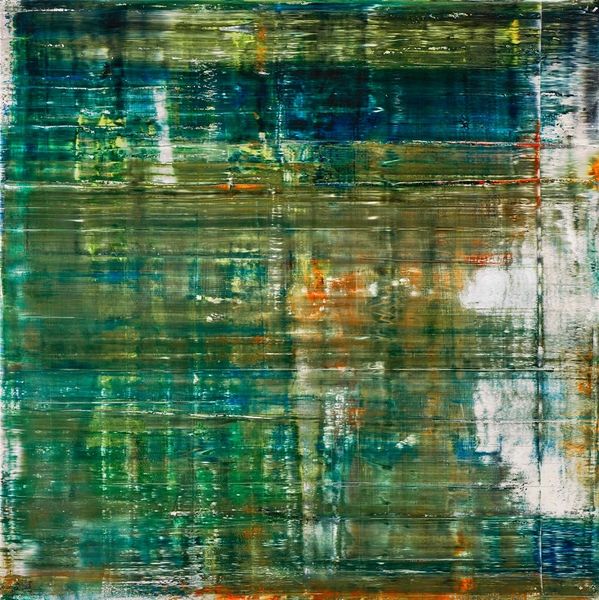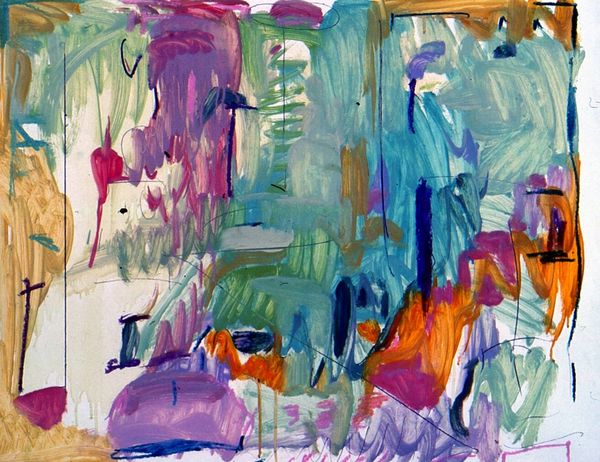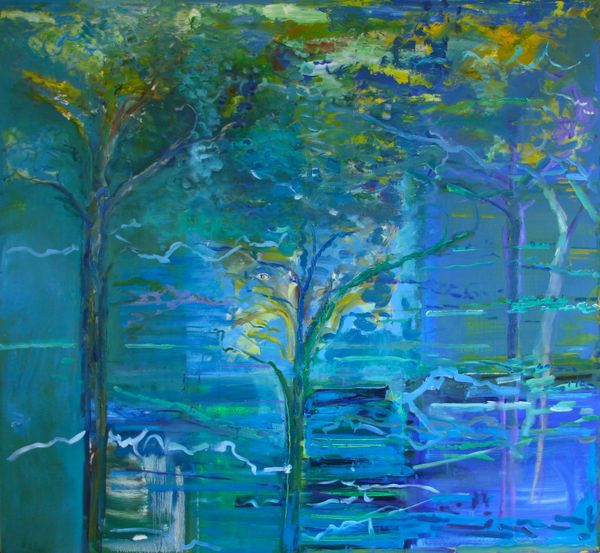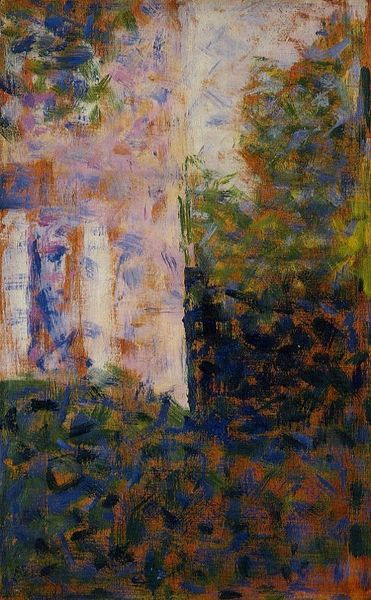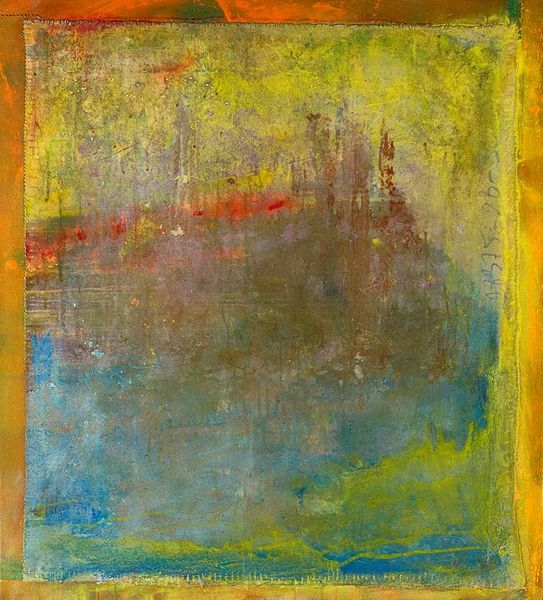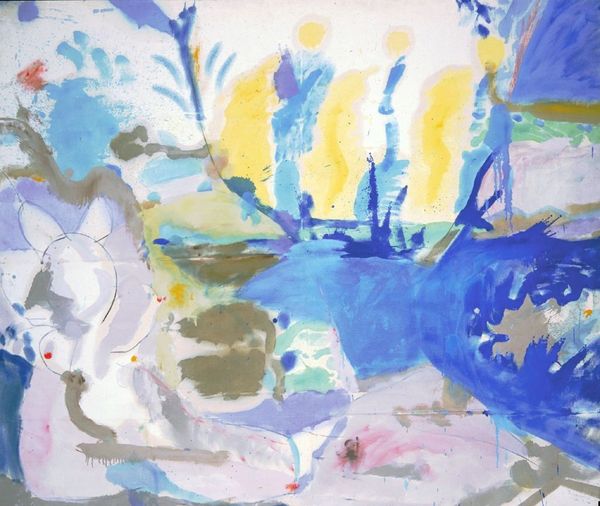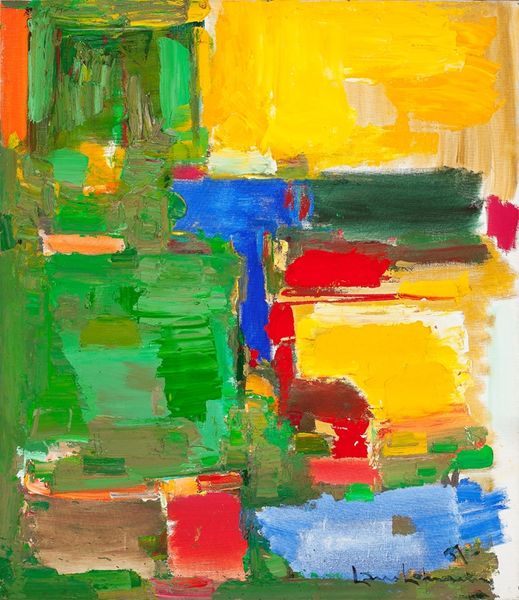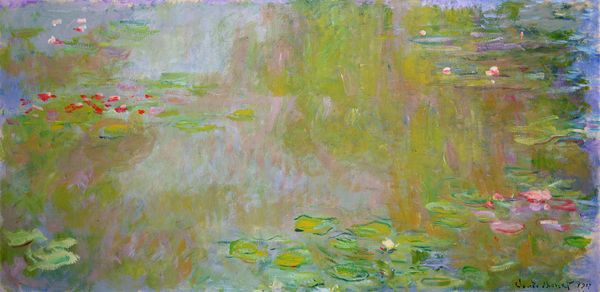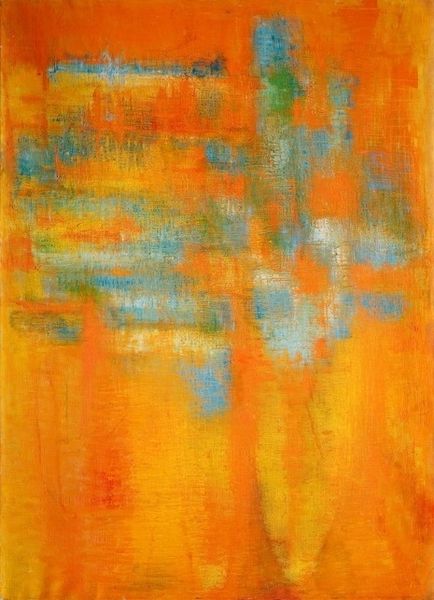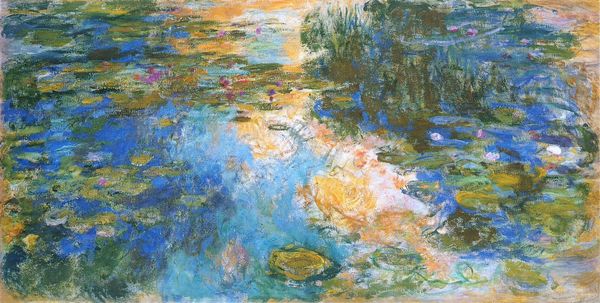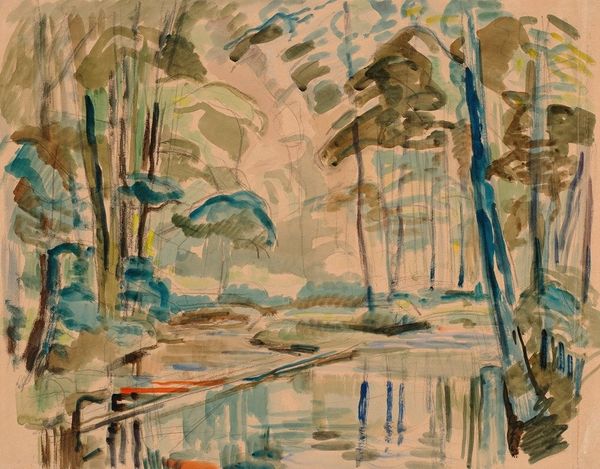
Copyright: Antonio Corpora,Fair Use
Curator: Standing before us is Antonio Corpora's "The Beautiful Morning," painted in 1982 using acrylic with a notably thick impasto technique. What's your initial take? Editor: It feels like sunlight filtering through trees next to a lake. Those blue strokes suggest ripples or reflections. Very calming. Curator: Corpora was deeply involved in the post-war abstraction movement. You see that layering? Each layer of acrylic—and consider the expense and availability of those pigments back then—represents a choice, a build-up of visual and material history. Editor: The way he lets the colors bleed together is what makes it speak to me. The green melting into yellow, the hints of pink peeking through...it's less about perfect representation and more about the feeling of a morning. It reminds me of trying to capture a fleeting moment with watercolors, you know? That sense of happy accidents. Curator: Exactly. And how does this abstraction then serve to enhance, not detract from, the concept of "morning?" Look closely at how the paint itself, the viscosity, becomes a character in the overall composition, dictating the pace, rhythm, and luminosity of the artwork. How labor intensive must have been! Editor: I think what's interesting is how such a loose application of paint can still evoke such a specific sensation. It feels almost intuitive, not planned out at all. Like Corpora just let the colors and textures flow out of him. Curator: It also defies the conventional narrative that abstract expressionism existed in a vacuum. Corpora's engagement with landscape and memory ties him to larger material concerns. Editor: And the title does so much work, doesn’t it? "The Beautiful Morning." It's almost like a challenge to the viewer: what *is* beautiful about a morning? And can this canvas answer it? Curator: Precisely! A perfect convergence between intention and process. What a wonderful material statement about post-war sensibility. Editor: You've really given me a lot to think about, seeing the piece from a social context, especially as relates to resources and processes, but honestly, I'm happy that I can experience a burst of feeling just looking at it. I will probably never see light again without thinking about that specific blue!
Comments
No comments
Be the first to comment and join the conversation on the ultimate creative platform.

